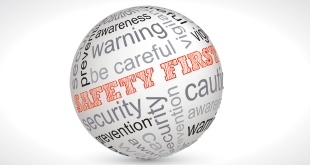Indoor air pollution has been found in some studies to be as much as 100 times worse than the air outside. Tobacco smoke, household cleaning products, chemical air fresheners, mold, radon, formaldehyde, building material byproducts, carbon and nitrogen dioxide – there’s a lot of dangerous stuff lingering in the air inside our homes (learn more).
A great many of you out there may find the idea of working out in a dingy, dusty home gym appealing. If you’re at all concerned about breathing clean air while working out to improve your health, you probably don’t.
High Cost is a Factor to Consider
A whole-house air purification system is something that everyone should have installed in their homes and maintained regularly. Of course, not everyone wants to spend upwards of $5000 on what most people would consider a “luxury” expense. This, despite how dangerous the air inside the average home is.
If you don’t have a whole-house system, a portable air purifier is the next best thing.
How to Choose a Portable Air Purifier
There are thousands of different models to choose from, offered by hundreds of different manufacturers. It would be easy enough to just do a Google search, see what models have the highest ratings, then purchase whatever fits into your price range. That’s the easiest way, but not the smartest.
The most expensive model won’t be the best option. Nor will the cheapest one on the shelf. Continue reading below to learn the most important things to look for when choosing an air purifier for your home needs.
Look for HEPA filters and MCS technologies:
Choosing a purifier that offers these two options will ensure the air you’re breathing while you workout or relax is as clean as it can be:
- HEPA filter: High-Efficiency Particulate Air filters are designed to filter 99.97% of all airborne particulates down to 0.03 microns. This is about as good as it gets for particulate filtration – outside perhaps what’s used in high-tech laboratory environments. This option won’t cost much more than a non-HEPA filter.
- MCS: Multiple Chemical Sensitivity purifiers are designed for people with bad allergies to chemicals of all kinds, including those with scent allergies. Even if you don’t have serious allergies, you still want MCS because it stands way above the competition when it comes to filtering virtually everything in the air you breathe. Purifiers with the MCS designation are also guaranteed not to off-gas chemical byproducts such as ozone while in use, which some cheaper machines do for household odor control.
Size does matter:
All jokes aside, you can consider any money you spend on an air purifier completely wasted if you don’t get a unit that’s made to more than adequately filter the space you’ll be using it in. Choosing an air filter based on the square footage it can filter is the same as buying an air conditioner to cool a room in your home. If you buy too small, you won’t get the results you’re looking for.
This is why it’s a good idea to purchase more than one if you want to keep all the air in your home clean.
Here’s how to measure in order to determine what size air purifier you need (you’ll need a tape measure and possibly a calculator):
- Measure L x W x H of the area you want to filter, such as your home gym (measure to the highest point of the ceiling, along with the longest and widest lengths, if the room isn’t built completely square).
- Using a calculator multiply L x W x H to find the square footage of the room.
For instance, a room that’s 10 x 12 x 8 = 960 square feet. In this case, you’d have to round up to a purifier rated to cover 1000 or more square feet.
Check the ACH rating:
ACH stands for “Air Change per Hour.” The number of times the air purifier can completely clean the air in a room every hour. You’ll also find some manufacturers call this CADR (Clean Air Delivery Rate) Each is always preceded by a number; the best being 4 ACH, or 350 CADR or higher.
ACH becomes most important if you don’t plan to run your purifier continuously, such as if you’re going to turn it on just before a workout in your gym area. Also, many people like to run a purifier in their bedroom at night while they’re sleeping, then turn the unit off in the morning.
Air filter replacement cost:
This one is simple. Put two air purifiers side-by-side, with the same technology including HEPA, MCA, square footage covered, and ACH. If the filter cost is way higher on one versus the other. Go with the unit that offers cheaper filter changes. Regardless if the model with cheaper filters costs $100 more upfront.
Filter upkeep is the real expense when it comes to maintaining an air purifier, not the upfront cost. Considering filters need to be changed 4 times per year, and those filters range from $20 – $50 on average, it should be obvious how quickly things can start adding up.
Conclusion
Cleaning the air inside your home will promote greater health, improve your home workouts, and prevent diseases like lung and other cancers. Considering that most of us spend, on average, around 90% of our lives indoors now, a quality air purifier doesn’t just make sense, it really is essential to a long and healthy existence.
Think the air inside your home is clean? If you want proof one way or the other, check out this home testing kit and find out for yourself.
 Best Home Gym Reviews and Tips for Your Home Gym
Best Home Gym Reviews and Tips for Your Home Gym






